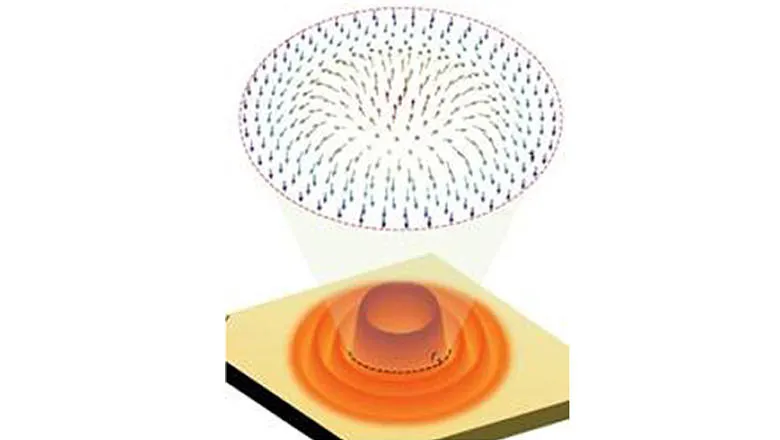16 May 2019
Photons made to behave like electrons in a skyrmion structure
A team of researchers from the Department of Physics, King’s College London, and the London Centre for Nanotechnology in the UK, and Shenzhen University in China, have discovered skyrmion structures made of photon spins for the first time.

A team of researchers from the Department of Physics, King’s College London, and the London Centre for Nanotechnology in the UK, and Shenzhen University in China, have discovered skyrmion structures made of photon spins for the first time.
Skyrmions are well known in magnetic materials and were long considered for applications in spintronics (how an electron spins and the magnetic field it produces) and high-density data storage. However, electromagnetic waves also carry spin and orbital angular momenta and the team looked to see if the same properties could be applied.
A skyrmion structure can be thought of as a hedgehog with spines sticking up vertically in the middle and tilting more horizontally the closer to the hedgehog’s feet. The same happens with skyrmions but the spines are the direction of the electric field. The positioning of these ‘spines’ is important because each spine represents a different polarisation state, or direction of the electric field, on the skyrmion surface.
As photons are particles which are basic units of light, it means that light in a skyrmion-like structure can be used to create higher resolution images, or, using the nanometre (nm) sized features of the skyrmion, to measure things extremely precisely. Other applications may include quantum technologies and data storage.
Importantly for applications, the researchers demonstrated that a focused vortex beam of twisted light, varies on the deep-subwavelength scales, down to 10nm distances, greatly exceeding the diffraction limit of conventional resolution methods. For visible light the diffraction limit is around 300nm. Diffraction always limits the resolution, however, the direction of the magnetic field, as indicated by the skyrmion structure, is not limited by diffraction and so can be observed at much finer, deep-subwavelength scales.
In order to achieve this experimentally, the team constructed and validated a unique scanning probe experimental set-up capable of achieving the above-mentioned resolution in measuring the spin structure of the optical beams.
Professor Anatoly Zayats of King’s College London said: “electrons and photons are very different animals with different properties defining their behaviour, such as spin and statistics. However, in the specially designed environments photons exhibit very similar behaviour to electrons, such as, for example, topologically protected states (something unheard for photons until very recently). The demonstrated photonic skyrmions is another example of how well-known electron phenomena can be transposed into the photonic domain, where they can be used for developing new applications.”
You can read more about this discovery in the team’s article in Nature Physics.

